A few years ago, Chanchai Dachan noticed that the ecosystem of the Mekong River, which is the lifeline for his community, drastically changed. As the water level dropped during the dry season, he saw a graveyard of trees. Devastated but far from helpless, he took action into his own hands. He collected some seeds, and created a little nursery in his home, growing various Mekong plants he knew since childhood. Fast forward to today, Chanchai has planted about 600 trees by himself and financed from his own savings. He is one of several locals who are part of the ComNetMekong team, a group of people dedicated to saving the ecosystem of the Mekong River from the negative impacts of the massive hydropower boom that is changing the Mekong forever.
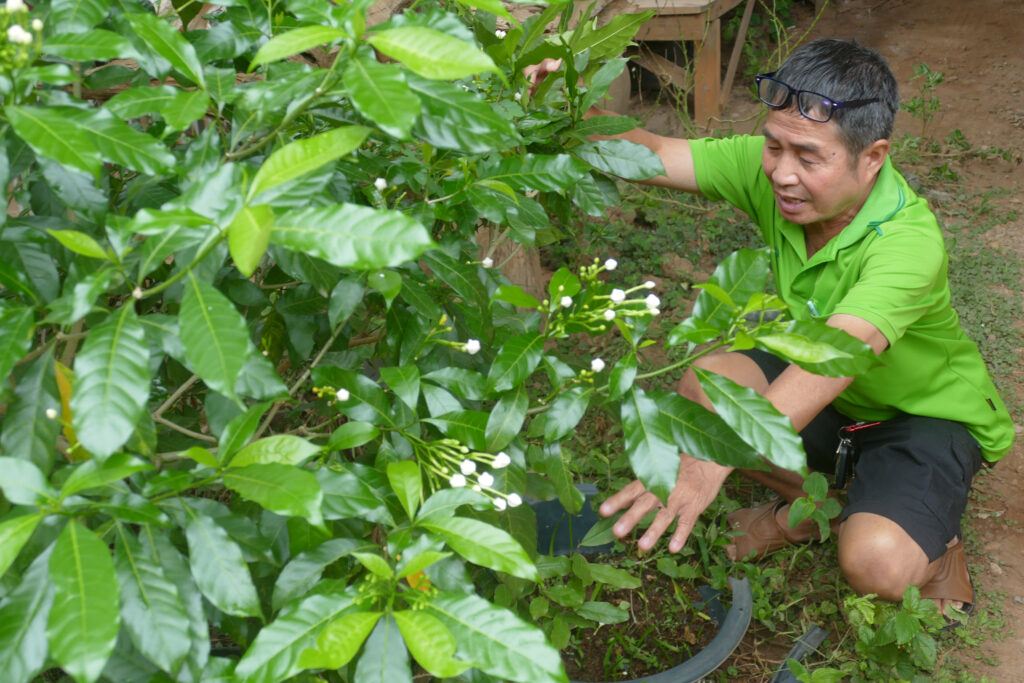
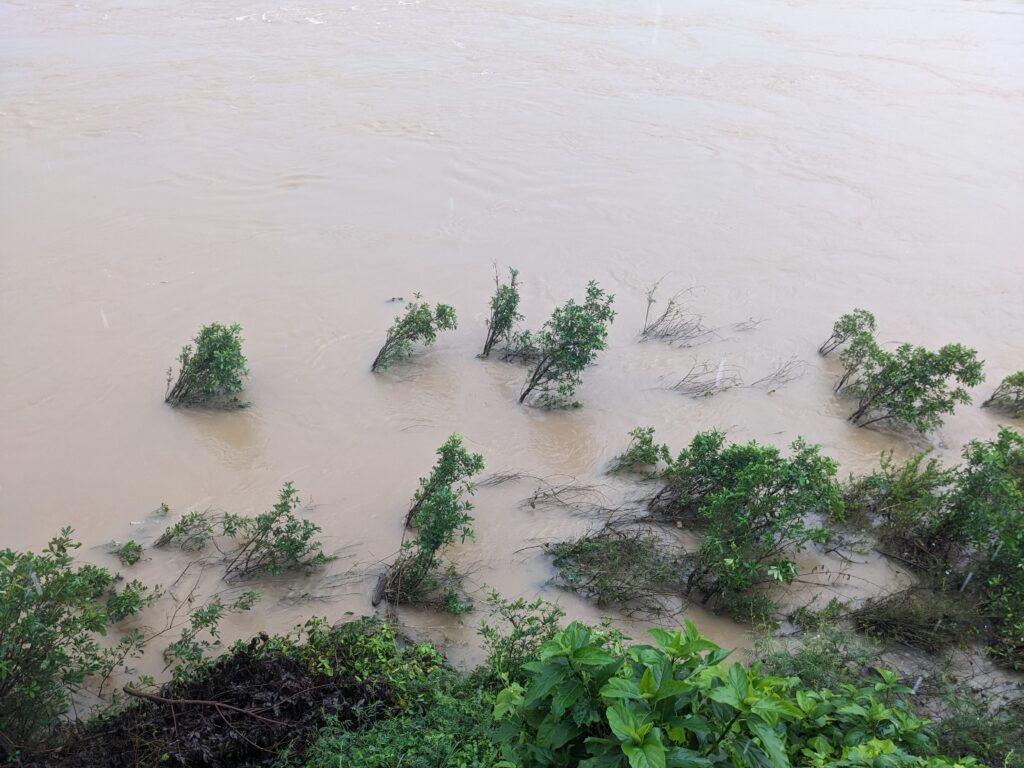
Chanchai takes good care on his tree saplings. During the dry season when the water level drops, he will plant them out along the coastline of the Mekong.
The Mekong, a lifeline for millions
Originating in the Himalayas in China, the Mekong flows from China through Myanmar, Laos, Thailand, Cambodia and finally into the South China Sea in Vietnam. Throughout its way, it provides home to rare wildlife, feeds jungles, irrigates crops and provides livelihoods. Its fish biodiversity is second in the world only after the Amazon, and it hosts the last remaining populations of the giant freshwater stingray and the Mekong giant catfish and some of the last Irrawaddy dolphins. It also feeds the world’s largest and most productive inland fishery, accounting for up to 25% of the global freshwater catch and providing livelihoods for tens of millions of people.


A fishing boat floats slowly down the Mekong. On the other side of the shore, a new country, Laos is looking back.
“The Mekong is like a mother to us. It feeds us, provides us livelihoods, and keeps our traditions alive,” tells us Bun Chaiwat Parakun, a local from the village of Ban Muang and employee of ComNetMekong. “But things have changed in the last four years. The catch has drastically decreased, and about 50-60% of fishermen decided to find a different profession.” In recent years, many locals sold their fishing boats and switched to farming rubber trees, bananas and tobacco, plantations which now cover a large part of the river’s coastline.
The catalyst for this change was the building of the Xayaburi dam in Laos, about 200 kilometres upstream of Ban Muang, which started operating in 2019. Together with a cascade of 11 dams built upstream in China, it disrupted the ecological integrity of the whole river system, and created a block for the major fish migrations that feed and provide a livelihood to millions of people.
“There were over a hundred fish species in this part of the Mekong in the past. Now, we can barely observe more than ten,” Chaiwat explains. Preecha Srisuwan, public relations expert at ComNetMekong adds “Since the Xayaburi dam started operating, the water level fluctuates more. Giant stingrays disappeared, which formerly weighed up to 100kg.”
Dam-building boom
Xayaburi is only one of the many hydropower plants that are disrupting the natural flow of the Mekong. A series of additional dams are planned for the Mekong mainstream in Laos, Thailand and Cambodia, with many more dams proposed and under construction on its tributaries. The drive to build these dams is based on the energy demand in the region.
Source: International Rivers (2019)
Sadly, many of the dam construction projects have largely ignored scientific studies, which raised concern on the serious risks to food security as well as the ecological functionality of the Mekong. Although more electricity will be available for the countries, much of that is intended for booming urban centres in Thailand. At the same time, local communities whose lives depend on the Mekong River have to bear the dire consequences of the dam building boom. Many villages will be underwater, locals will be displaced, stripping them from their traditional livelihoods that are dependent on fishing and plants picked on the shore of the Mekong, as well as the fertile soil along the course of the river. During the building of the Xayaburi dam, Laotian villagers, many who depended on fishing, were forced to move, and on the land they received as compensation, they now have to buy the fish, the water, and reinvent themselves economically without the knowledge or financial resources needed.
The ComNetMekong team takes us to the location of the next big dam project, which is the Pak Chom dam on the Thai-Laos border. This dam, once constructed, will be operated by the two countries together. However, the details on how that would be managed are unclear.


Preecha talks to a local fisherman who is going by his daily business. On the planned location of the Pak Choi dam, there is no sign of construction yet. But if it once becomes a reality, this fisherman’s life will drastically change.
“Many communities in Thailand have been vocal about opposing dams on the lower Mekong River. In 2021, we organised a protest in Bangkok to save the Mekong. People from all seven provinces along the course of the Mekong River in Thailand attended,” Preecha tells us. “The government responded by appointing a working group for the topic. However, for over 2,5 years since the protest, this group has not produced any outcome.”
“What the government doesn’t understand is that for a large population, the Mekong provides almost everything. We can catch fish to eat, it provides water to drink and the land alongside the shores is excellent for growing crops. We will lose our traditions and many of our cultural practices connected to the Mekong as well. But due to the massive interventions in the river’s natural flow, today, it seems like the Mekong is close to dying.”
Bun Chaiwat Parakun, local of Ban Mueng, ComNetMekong
Bringing communities together
Amidst this dam construction boom on the Mekong, it is ever more important to engage locals, inform them about what is at stake and give them a voice. To date, ComNetMekong supports 30 community groups from seven Northeastern provinces along the Mekong River. Together with other organisations, academic institutions and the Fishery Department, ComNetMekong has been monitoring the impacts on the Mekong ecological system, its people and their culture. They hold trainings and public events for fishermen, farmers and other locals, as well as the youth and elderly, about how to protect the biodiversity of the Mekong River. “It takes a long time to change the mindset of people,” Preecha adds when we ask about the challenging parts of his job. “But if we spend time with them on a regular basis, over time they start opening up. One just needs to be patient.”
We accompany the ComNetMekong team to two of their latest project sites. Here they focus on safeguarding the critically endangered Jullien’s Golden Carp, bringing local communities on board as well. In this project, they enhanced people’s knowledge about the status of the species, conducted interviews with locals, developed strategic conservation action plans with stakeholders, and established fish conservation zones.
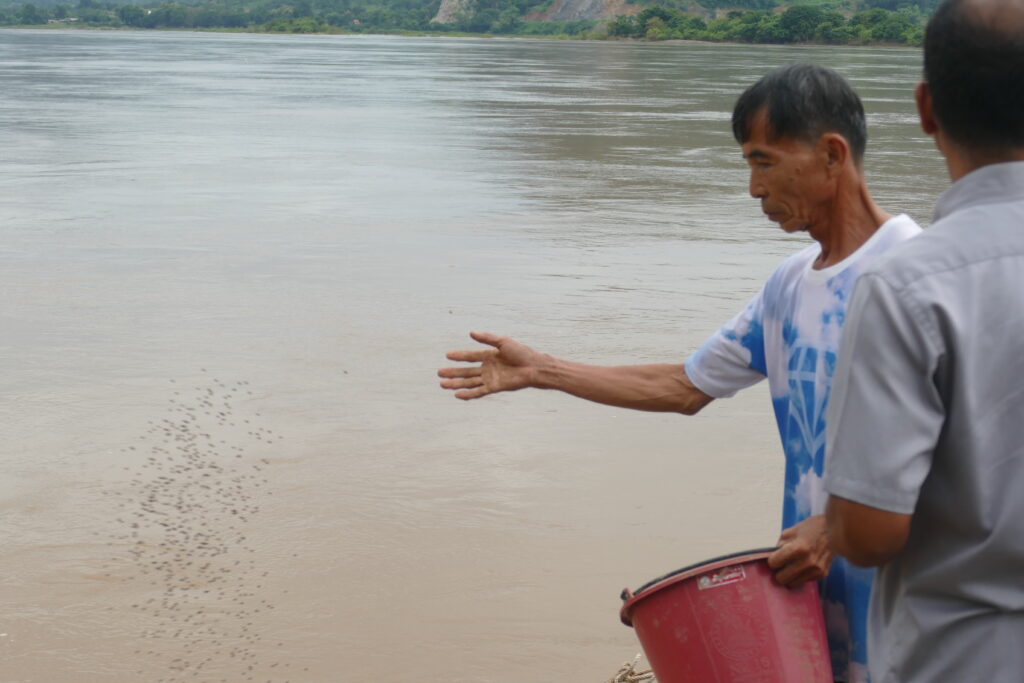
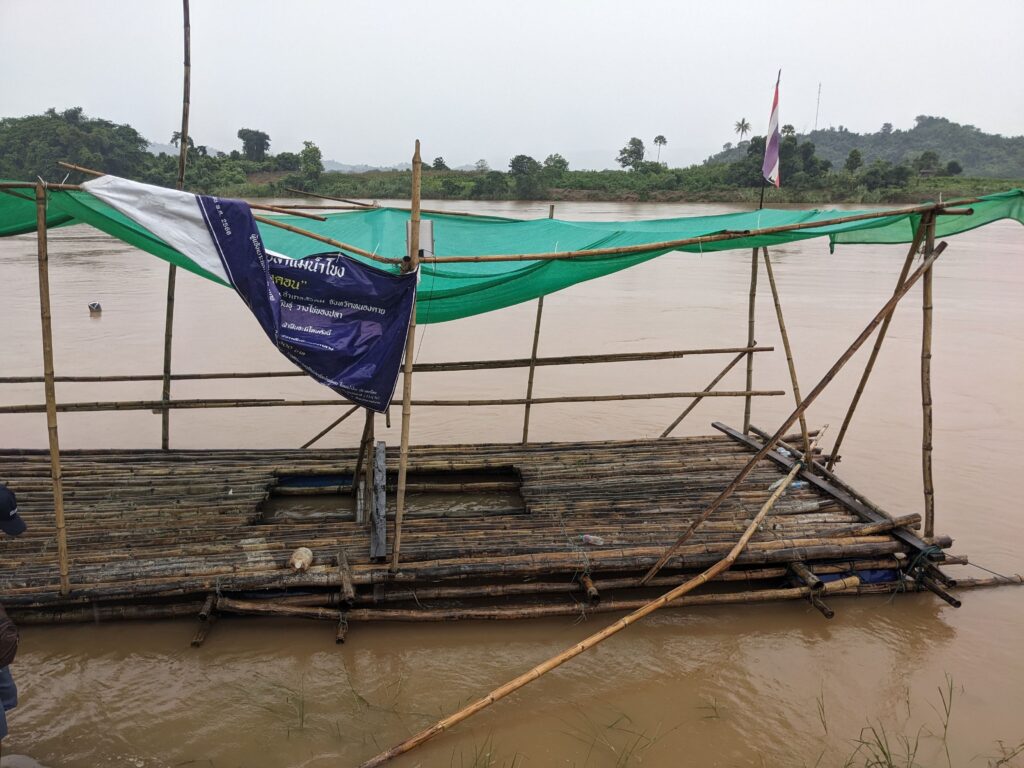
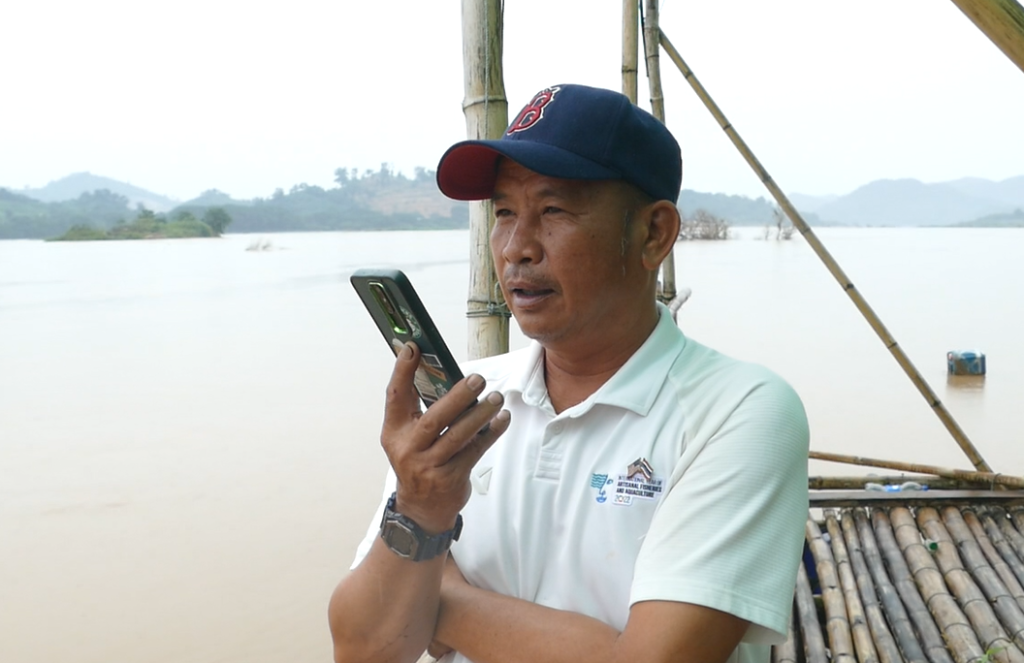
Kusol, a local villager comes to add fish food to the water in the conservation zone every day. To monitor fish activity, floating bamboo rafts were built. Bun explains to us the key tasks performed by the villagers using google translate on his phone.
In these zones, managed and maintained by the local community, fishing is not allowed. Instead, they regularly bring fish food to provide enough nutrients that the carp is missing due to the lack of sediments that are now withheld by the dams upstream.
We end this eventful day at the Mekong Hub, a space directly by the Mekong operated by the local ComNetMekong employees. We get to taste an amazing traditional, local dinner prepared by the team, where fish and various local herbs and vegetables are in the focus. While we try three different fish dishes, bamboo shoots, papaya salad and a whole selection of other herbs we don’t even know the name of, we think of how much the Mekong has taught these people. Even as travelers who are not from here, we get to observe their love for the river, their diverse set of skills in fishing, rowing, reading the river and its currents, understanding weather patterns and knowing all the edible plants and mushrooms this fertile soil provides. “The young generation participates in all of the community events. They learn our ways, how to care for this ecosystem, and hopefully, how to stand up against those who aim to destroy it,” Bun tells us.
We close our eyes, and imagine what it would be like here with a cascade of further dams disrupting the communities’ long-standing partnership with the river. It is not so hard to picture this image, as that has been the faith of many powerful rivers around the world throughout the last decades. Rivers in our home regions, back in Central Europe, which already lost so much of their biodiversity and riverine communities. But for the Mekong River, it is still not too late.
To dam or not to dam
Dams are a source of green energy, and the communities in the Mekong River Basin undoubtedly need electrical power. The key is on one hand, where this power actually ends up going. Because the reality is, much of the electricity produced in Laos for example is now being sold to Thailand, where the money ends up in companies’ pockets, not at all being spent to provide support to affected communities. On the other hand, could it even be possible to harness the Mekong’s power while protecting its abundance? A 2012 study by Guy Ziv and his colleagues shows positive signs as they analysed 27 dams proposed for the river’s tributaries. They compared the projected power generated from each with its likely damage to fisheries. They found that the differences in the ecological costs of the projects are huge. Some dams alone would reduce fish biomass directly downstream by more than 10% percent. However, some dams carefully placed elsewhere could produce significant power with minimal damage to food supplies.
It is clear that there are other, alternative ways than the one paved for the Mekong. What is certain, that Chanchai, Preecha, Bun and the whole ComNetMekong team will be there on the frontlines, and speaking as one voice, representing communities and the Mekong River itself.

